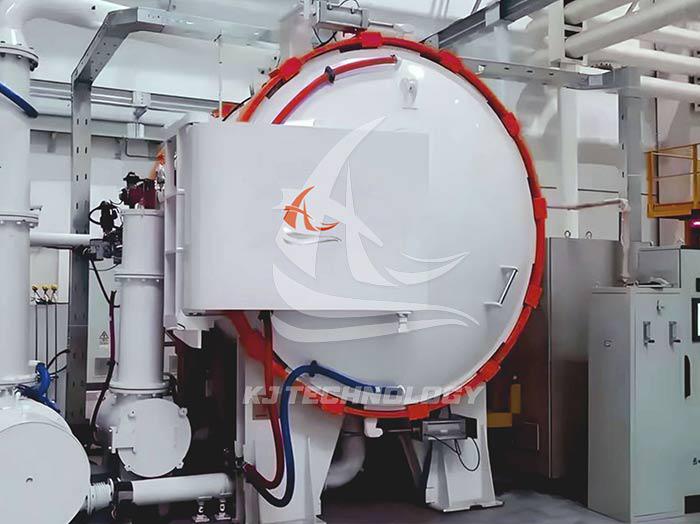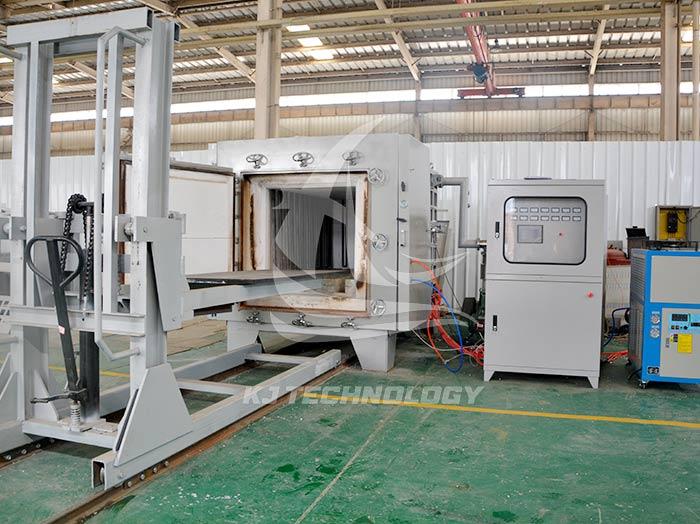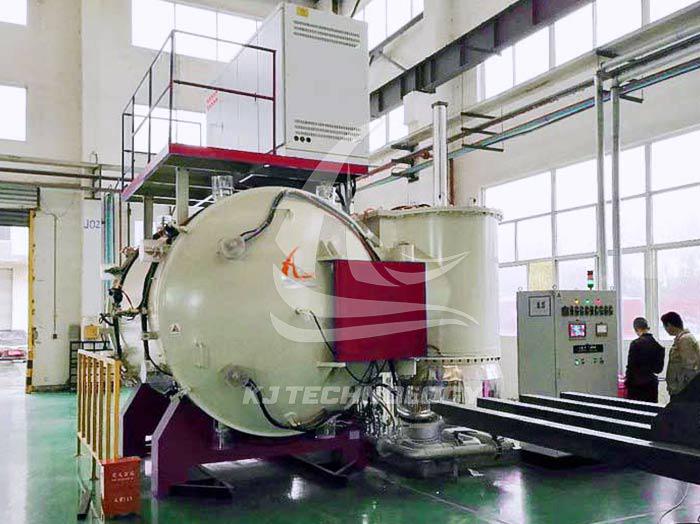Can high vacuum and high temperature brazing electric furnace brazing diamond?
 08-26-2025 Author: KJ technology
08-26-2025 Author: KJ technology
The high vacuum and high temperature brazing electric furnace can brazing diamond, and its principle and advantages are as follows:
1. Technical principle: Chemical metallurgical bonding under vacuum environment
Eliminate oxidation and pollution
Diamond is prone to react with oxygen and nitrogen at high temperatures, leading to graphitization or thermal damage. A high vacuum environment (usually below 0.1 Pa) can effectively isolate oxygen, prevent diamond surface oxidation, and reduce the volatilization of active elements in the brazing material, ensuring welding quality.
Active elements promote wetting
The interface energy between diamond and general metals is relatively high, making it difficult to be wetted by low melting point alloys. By adding strong carbide forming elements such as titanium (Ti) and chromium (Cr) to the brazing material, these elements diffuse towards the surface of diamond at high temperatures, generating carbides (such as TiC, Cr ₇ C ∝), thereby reducing interfacial tension and achieving good wetting of diamond by the brazing material. For example, Cu Sn Ti alloy can completely wet diamond at 880-930 ℃, forming a strong metallurgical bond.
Chemical metallurgical bonding mechanism
During the high-temperature brazing process, the interface between diamond, brazing material, and substrate (such as steel, hard alloy) undergoes dissolution, diffusion, and chemical reactions. For example:
Diamond and brazing material: Ti element combines with C in diamond to form TiC, forming a chemical bond.
Solder and substrate: Solder and steel substrate undergo component diffusion at the interface, forming solid solutions or compounds (such as Fe Ti, Ni Ti), achieving high-strength bonding.
2. Technical advantage: significantly improving tool performance
High bonding strength
Traditional electroplated diamond tools rely solely on mechanical clamping force to fix abrasive particles, which is prone to detachment. High temperature brazing combines chemical metallurgy to achieve a diamond exposure height of 70% -80%, increasing the substrate's grip on the diamond by more than three times and extending the tool life by three times.
Efficient grinding performance
Brazed diamond tools have a larger chip space, lower grinding force, power consumption, and temperature. For example, the initial grinding performance of brazed grinding wheels is more than 3.5 times that of electroplated grinding wheels, making them suitable for heavy-duty and efficient grinding operations.
Energy conservation, environmental protection and economy
Brazing tools can reduce diamond usage by 50%, increase cutting speed by 2 times, and avoid heavy metal pollution in electroplating processes, which is in line with the trend of green manufacturing.
3. Typical application scenarios
Single layer diamond tool
Grinding wheel and saw blade: used for cutting and grinding hard and brittle materials such as stone, ceramics, and concrete.
Drill bits and cutting tools: efficient drill bits for geological drilling, oil extraction, and other fields, as well as precision cutting tools for wood and composite material processing.
Metal matrix composite
Diamond steel matrix: The strong bond between diamond and steel is achieved through vacuum brazing, which is used to manufacture wear-resistant components such as molds and bearings.
Diamond Hard Alloy: Developing high-performance cutting tools by combining the high strength of hard alloys with the high hardness of diamond.
Special field applications
Aerospace: Brazed diamond coating tools are used for processing difficult to machine materials such as titanium alloys and high-temperature alloys.
Electronics industry: manufacturing high-precision diamond heat sinks, optical component processing tools, etc.
4. Process parameters and equipment requirements
Key process parameters
Brazing temperature: usually 30-50 ℃ higher than the melting point of the brazing material, for example, the brazing temperature of Cu Sn Ti alloy is 880-930 ℃.
Insulation time: 10-20 minutes to ensure sufficient interface reaction.
Vacuum degree: below 0.1 Pa, avoid oxidation.
Equipment Requirements
High vacuum system: equipped with molecular pumps or diffusion pumps to achieve rapid vacuum extraction.
Efficient heating system: using graphite heater or induction heating to ensure temperature uniformity (± 5 ℃).
Cooling system: Rapid cooling to reduce thermal stress and avoid substrate deformation.








